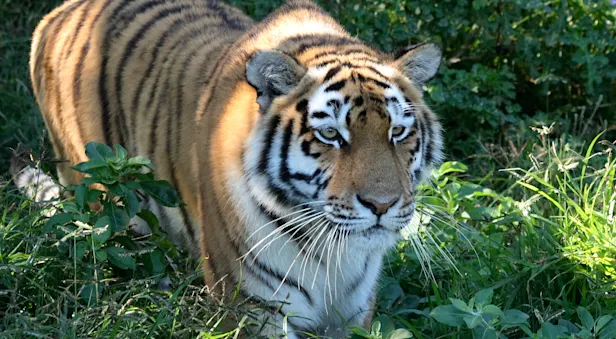
Know Before You Go


Indian Rhinoceros Facts | India Wildlife Guide
The Indian rhinoceros—also called the great one-horned rhinoceros or the Asian one-horned rhinoceros—is found in the tall grasslands and forests in the foothills of the Himalayas. It can run at speeds of up to 25 miles per hour for short periods and is also an excellent swimmer. It has a keen sense of hearing and smell but relatively poor eyesight. The Indian rhino measures 5 to 7 feet in height and can be up to 13 feet long. In the wild, fully grown males are larger than females, weighing from 4,800 to 6,600 pounds while females weigh about 3,500 pounds.
This primordial-looking creature has thick, silver-brown skin, which turns pinkish near the sizable, thick skin folds that cover its body. Its upper legs and shoulders are scattered with wartlike bumps, and it possesses a scant amount of body hair, including eyelashes, ear-fringes and tail-brush. Adult males and females have a single horn, which begins to show after six years in age. Like human fingernails, the horn is made of keratin. The horn typically grows about 10 inches in length, though there are records of it developing to more than 22 inches. The black nasal horn curves backward from the nose and, in captivity, is often worn down to a thick knob.
Asian rhinoceros live in tall grasslands and riverine forests, but because of habitat loss, they have been pushed to more cultivated areas. They are chiefly solitary creatures—except mothers and calves and breeding pairs—although they sometimes gather together at bathing areas.
The Indian rhinoceros is a grazer, feeding almost entirely of grasses, but it is also known to incorporate leaves, branches of shrubs, trees, fruits and aquatic plants into its diet. The rhino eats during the morning and evening by using its prehensile lip to seize grass stems, bending them and biting off the top. With very tall grasses or saplings, the rhino will frequently walk over the plant with its legs on either side, using the weight of its body to cast the end of the plant to the level of its mouth. Mothers will use this approach to make food accessible to their calves.
They have few natural enemies, except for unguarded calves, which are sometimes killed by tigers. Adult rhinos are less at risk due to their size. Humans pose the most significant threat to the rhinoceros, typically hunting them for their horn or for sport.
See One-Horned Rhinos on These Adventures

Wild & Ancient Himalaya: Nepal & Bhutan
Explore mountain heights and jungle lowlands on this soulful journey through the cultural and wildlife treasures of two neighboring Himalayan nations—including rhino tracking in Chitwan National Park.
































